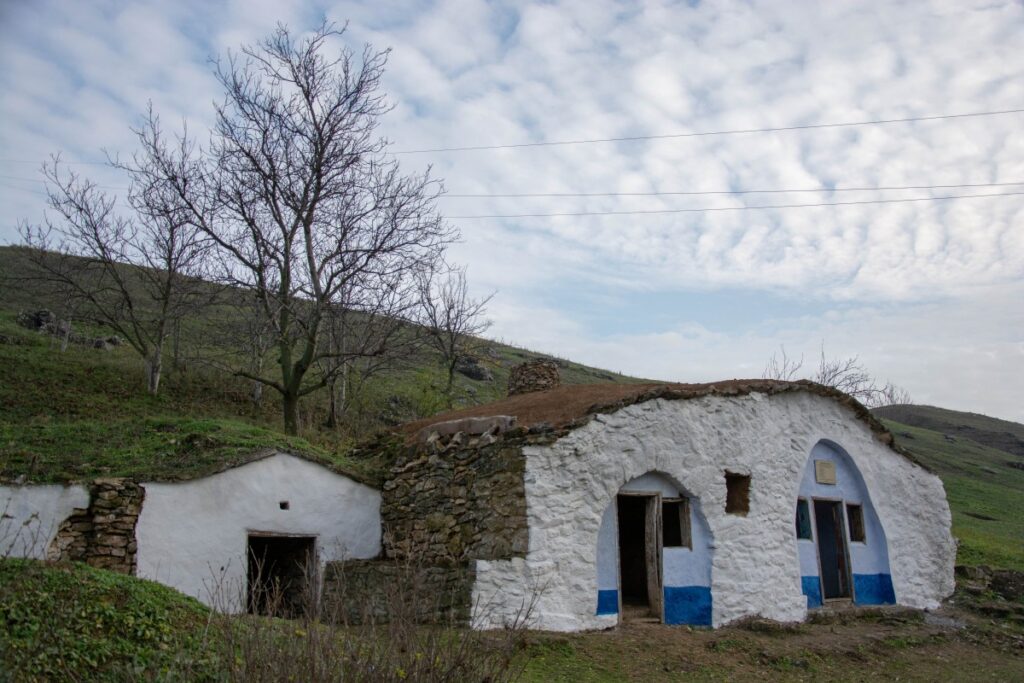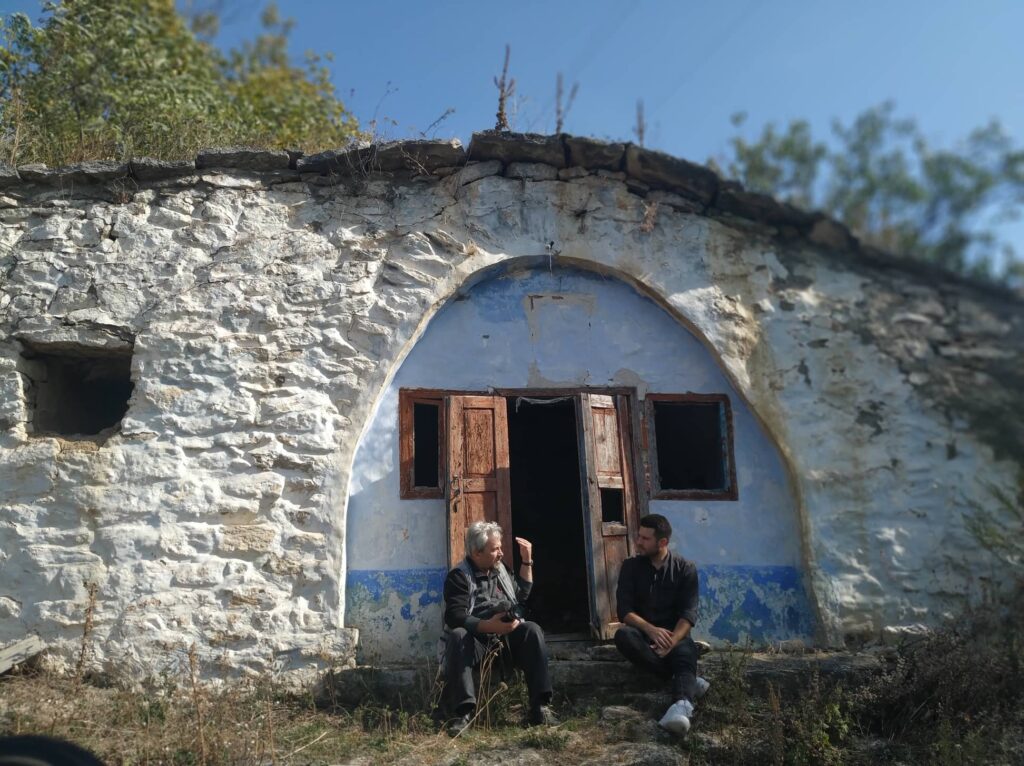Among the rocky hills in the floodplain of the Răut River, a picturesque settlement is hidden – Rogojeni, Șoldănești district. What makes it special is the fact that a good portion of the villagers still live in dugouts, traditional dwellings long gone in other parts. These are rooms carved into the rocky banks, with a low door and two small windows.
In the past, people built such dwellings out of poverty and necessity, explain the elders who still live in them, also due to poverty. It’s cool in the summer and warmer in the winter compared to a regular house, and they say you don’t need much fire. The local authorities would like to turn the settlement into a tourist attraction, but they don’t have the funds to preserve and restore these old traditional houses.

On the outskirts of the old village of Rogojeni, a few hundred meters away from the Răut River, we found Aunt Maria at home, one of the oldest inhabitants of the village. She was resting on the porch of her “baște”, as the people of Rogojeni call the dugouts that their ancestors carved into the rocky banks several hundred years ago.
37 years ago, her husband passed away, shared the 85-year-old woman. Since then, she has been living alone in the centuries-old dugout. The dwelling is not connected to a water supply, gas, or sewage system. However, it is quite comfortable.
“Here, I have a cool shelter in the summer, so I sleep well, but it’s warm during the winter. I don’t plan on moving from here. I put an extra blanket at the door, and this is where I’ll stay for however many days I have left to live.”
Aunt Maria says she inherited the dugout from her in-laws and raised four children in it. People used to build such dwellings out of poverty and necessity. The dugout measures a few square meters, has a low door, two small windows, a stove, a bed, and a table.

Currently, in the village, around 10 dugouts have remained intact and preserved over time. However, the majority of them are abandoned. In search of a better life, in the 1980s, the old owners began building houses near the Railway Station in the neighboring town, which they themselves founded and gave the same name. Those who chose to continue living in the old Rogojeni nostalgically remember the times when the village was vibrant, with community gatherings and visits between neighbors. On Sundays and holidays, people would go to church. Today, the holy place is in ruins.
FOR THE MOST IMPORTANT NEWS, FOLLOW US ON TWITTER!
Several astonishing legends are associated with the old village of Rogojeni. One of them revolves around a crescent-shaped stone located on a small hill at the entrance of the village. It is said that this symbol was placed there by Ottoman soldiers.
“According to the elders’ tales, there was a fierce battle between the Moldavian army and the Ottoman army. It is possible that the soldiers, including Turkish and Ottoman soldiers, were buried here. The crescent symbol is said to mark the spot where many soldiers remained on the battlefield. The elders say that it is cursed and cannot be unearthed or dug up.”
According to the officials from the Agency for Inspection and Restoration of Monuments in Moldova, the old village of Rogojeni can indeed be considered a true open-air museum.


